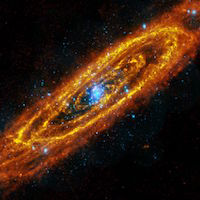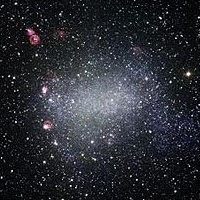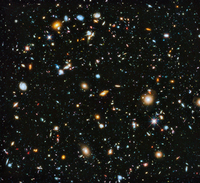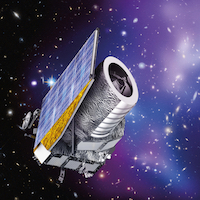Research disciplines
Interstellar dust in galaxies

UGent is a core team of the ongoing DustPedia project, one of the most extensive and intensive studies of dust in galaxies in the nearby Universe. Apart from observational studies, the actual modelling of the dusty ISM in galaxies is a long-term ambition of the team. The state-of-art SKIRT radiative transfer code has been developed and extended for more than a decade at UGent.
Dwarf galaxies

The team is actively exploring alternatives to the SPH technique to simulate the hydrodynamics of galaxies. A key exponent of this research is the moving-mesh code SHADOWFAX which has excellent shock and interface capturing capabilities.
Galaxy dynamics
The UGent astronomy team started its extragalactic research in the 1980s in the field of galaxy kinematics and dynamics, and has built up a strong expertise on this topic. Earlier work mainly focused on the stellar dynamical modelling of the observed kinematics of giant and dwarf early-type galaxies. The current interest has shifted towards rotation curves and dark matter, the dynamical effects of black holes, and the triggering mechanisms of spiral arm structure in disc galaxies, a still unsolved riddle in galaxy dynamics that is at the heart of the science rationale behind the ongoing ESA space mission GAIA.
Galaxy evolution through cosmic time (Prof. Arjen van der Wel)
Surveys of galaxies with large redshifts reveal evolutionary history of the universe. Astronomers at UGent are using ESO's Very Large Telescope (VLT) and the NASA/ESA Hubble Space Telescope (HST) to study the stellar content, structure and star-formation activity of galaxies through cosmic time.
We lead the ESO Public Spectroscopic Survey LEGA-C, the scientific exploration of which is supported by a H2020 ERC grant. and we play key roles in prominent international projects, including the Treasury HST programs CANDELS and 3D-HST, and large ground-based surveys such as UKIDSS, ZFOURGE and SAMI.
Instrumentation
While the astronomy group has no own instrumentation lab, it is involved in the development of instruments for the next generation of ground-based and space-born telescopes. The main focus is on infrared instrumentation, with UGent astronomers participating to the science programmes of the MIRI instrument onboard JWST, of METIS at the E-ELT, and of the proposed SPICA mission. Furthermore, the group is involved in the preparation of several forthcoming ESA missions, such as the Euclid dark energy and dark matter mission, and the next-generation X-ray observatory Athena.


